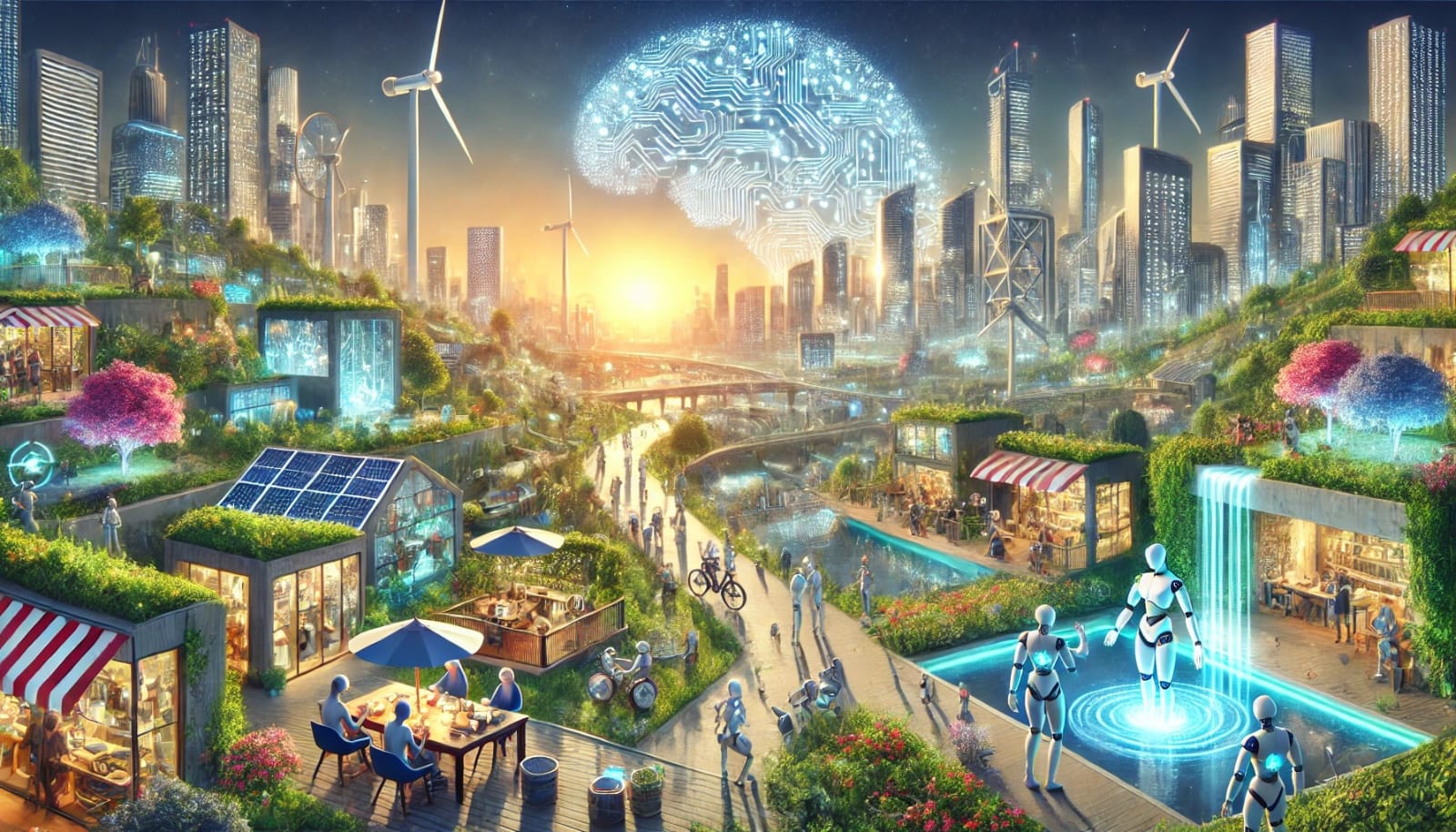Humanity stands at the precipice of a monumental transition. From the age of human intelligence to the age of artificial intelligence, this era heralds unprecedented change. What began as a quest for survival and fulfillment of basic needs is evolving into an exploration of possibilities and desires, driven by the power of AI. This shift is not just technological—it’s a philosophical and economic transformation, redefining scarcity, abundance, and the very nature of value.
From Human Intelligence to Artificial Intelligence
For millennia, human intelligence has been the cornerstone of progress. From creating tools to solving complex problems, it has driven innovation, society, and the economy. But now, artificial intelligence is emerging as a collaborator and, in some cases, a replacement for human intellect.
AI systems can process vast amounts of data in seconds, perform tasks with greater precision, and learn from their experiences, surpassing human capabilities in specific domains. Examples abound:
- Healthcare: AI diagnoses diseases more accurately and faster than doctors.
- Manufacturing: Robotics handle intricate processes with zero fatigue.
- Creativity: AI generates music, art, and content indistinguishable from human work.
This transition is not about diminishing human intelligence but amplifying it. By offloading repetitive tasks to AI, humans can focus on creativity, innovation, and emotional intelligence—domains where AI is still limited.
From Scarcity to Abundance
Historically, human societies have been shaped by scarcity. Limited resources drove competition and innovation, with economies built around managing scarcity to meet essential needs. But with AI, the paradigm is shifting toward abundance.
- Automation of Production:
AI-driven automation can manufacture goods faster and more efficiently, reducing costs and increasing accessibility. For example, 3D printing combined with AI design algorithms can create intricate products on demand, drastically cutting waste and resource usage. - Energy Revolution:
AI optimizes renewable energy systems, making clean energy more efficient and scalable. With abundant energy, constraints on growth, transportation, and technology diminish, enabling a new era of innovation. - Knowledge and Information:
The internet democratized knowledge, but AI is contextualizing and personalizing it. ChatGPT-like models, for instance, provide tailored insights, making expertise available to anyone with an internet connection.
As abundance grows, the challenge becomes one of distribution and equitable access. Ensuring that the fruits of AI-driven abundance reach all levels of society will be key to a fair and prosperous future.
From an Economy of Necessity to an Economy of Desire
With scarcity as the norm, much of human history has focused on fulfilling basic necessities—food, shelter, and safety. Economies revolved around meeting these essential needs. But as AI and abundance alleviate these constraints, we are transitioning to an economy of desire, where innovation caters to aspirations, individuality, and experiences.
- Personalization and Customization:
AI enables hyper-personalized products and services. From customized fashion to tailored entertainment experiences, people are no longer confined to mass-market offerings. - Experience over Material Goods:
As basic needs are met, consumers increasingly prioritize experiences over possessions. Virtual reality, AI-driven tourism, and immersive entertainment are growing sectors in this economy of desire. - Creative Expression and Purpose:
Freed from the constraints of necessity, individuals can pursue passions and self-expression. AI tools democratize creativity, allowing anyone to create art, music, or content without traditional barriers.
This shift redefines the purpose of work and value creation. In the economy of desire, fulfillment, purpose, and joy become central to economic activity, moving beyond mere survival.
The Challenges of Transition
While the promises of AI, abundance, and the economy of desire are immense, they are not without challenges:
- Equity: The benefits of AI must be distributed fairly to avoid exacerbating inequality.
- Sustainability: Abundance must be balanced with environmental considerations to ensure long-term prosperity.
- Purpose: With automation handling most necessities, societies will need to redefine the role of work and find new sources of purpose and identity.
A New Horizon for Humanity
The journey from the age of human intelligence to the age of artificial intelligence is not just a technological leap—it’s a reimagining of what it means to live, work, and create. The transition from scarcity to abundance, and from necessity to desire, opens doors to unimaginable possibilities.
In this new era, humanity has the chance to transcend the struggles of the past and embrace a future of creativity, fulfillment, and shared prosperity. The question is no longer what must we do to survive? but what can we do to thrive?
The answer lies in our ability to adapt, innovate, and ensure that the age of artificial intelligence becomes an age of shared abundance and boundless opportunity.

Leave a Reply